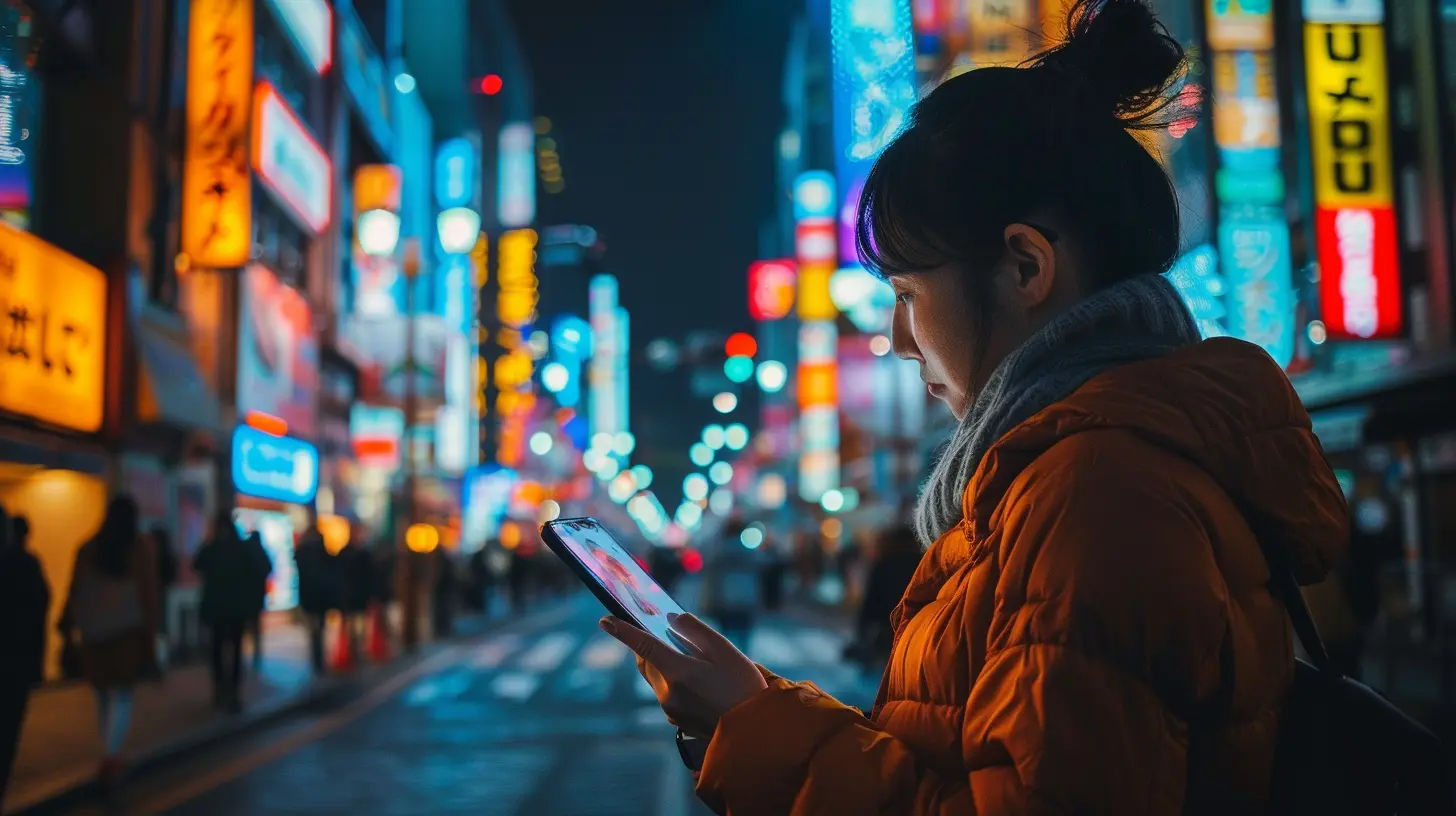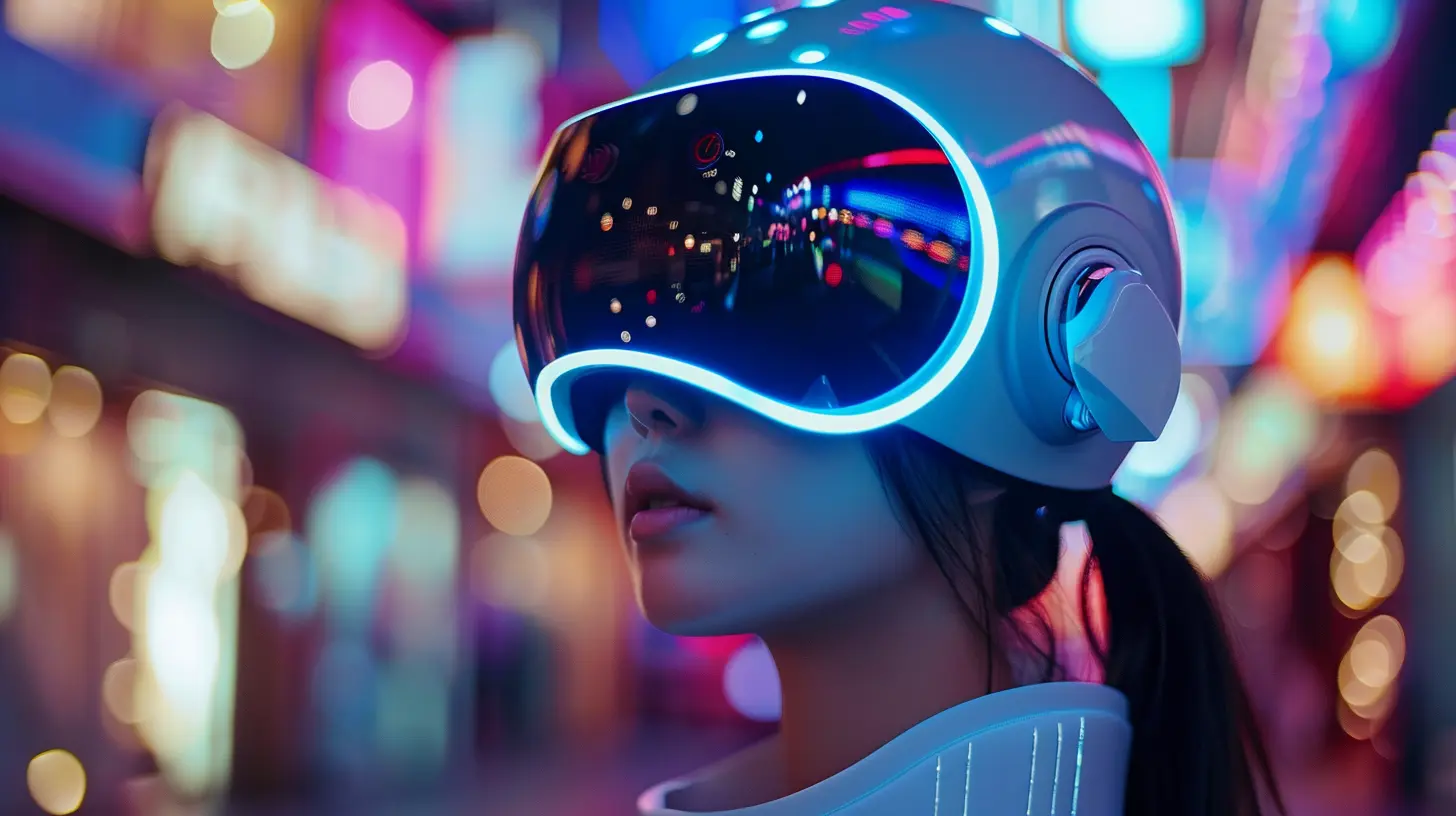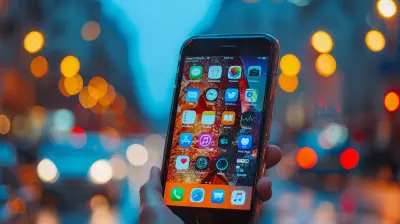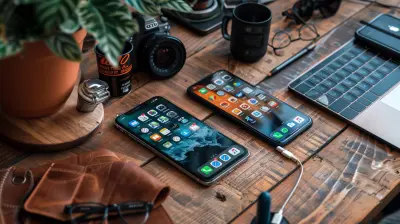Understanding the Role of AI-Driven Personalization in Mobile
7 October 2025
Alright, let’s be real for a second—if your mobile experience still feels generic, you're seriously missing out. We’re living in an era where Artificial Intelligence (AI) is tailoring everything to you—yes, YOU. From the TikToks you binge at 2 a.m. to the push notifications that eerily know what you’re craving, AI-driven personalization is running the show.
But what does that actually mean? How does AI get inside your apps, your preferences, your life? And how do brands use this tech magic to keep you hooked, spending, and engaged?
Let’s dive deep into the digital rabbit hole and break it all down—no fluff, just straight-up facts and insights.
What is AI-Driven Personalization?
So, what’s the deal with AI-driven personalization? In simple terms, it’s the process where artificial intelligence algorithms analyze your behavior, preferences, and habits on mobile devices, then serve up content, recommendations, and interactions that feel tailor-made for you.Imagine you walk into a coffee shop and the barista says, “Hey Alex, your usual caramel latte?” That’s what AI does—but digitally and at scale.
This isn’t just about showing ads based on past clicks. It’s about predicting what you’ll want before you even know you want it. Creepy? Maybe. Useful? Absolutely.
Why Mobile? Why Now?
Here’s the thing: mobile phones are practically extensions of our bodies now. You probably check your phone before brushing your teeth (don’t lie, we've all done it). And because we spend a massive chunk of our lives on mobile devices, it makes perfect sense that AI-powered personalization is laser-focused there.- Over 60% of global internet traffic comes from mobile.
- People spend an average of over 4 hours per day on their phones.
- App retention rates skyrocket when users receive personalized experiences.
So yeah, mobile is the key battleground, and AI is the weapon of choice.
The Backbone: How AI Actually Personalizes Mobile Experiences
Let’s geek out for a sec (just a little). The process behind AI-driven personalization isn’t magic—it’s math, data, and machine learning. Here's how it works:1. Data Collection
From the first time you install an app or visit a mobile website, data gets collected. We're talking:- Location data
- Browsing history
- App usage
- Purchase behavior
- Time spent on each screen
- Taps, swipes, and scrolls
Basically, every interaction = data point.
2. Behavioral Analysis
Once enough data is collected, machine learning models jump in. They look for patterns:- Do you always buy snacks after 8 p.m.?
- Are you more likely to click on videos titled “Top 10…”?
- Do you open push notifications or ignore them?
AI picks up on these micro-behaviors and learns what makes you tick.
3. Predictive Modeling
Now comes the cool part. AI starts making predictions:- “You’re gonna love these shoes.”
- “This playlist is your vibe.”
- "Order your usual? It's Tuesday, after all."
It’s like having a digital buddy who knows your tastes better than your best friend.
Real-World Examples: AI Personalization in Action
You don’t need to look far to see AI-driven personalization in mobile. In fact, it’s probably shaping your experience right now.Netflix
Ever wonder how Netflix always knows what to suggest next? Their AI looks at your watch history, completion rate, search behavior, and even pause points to recommend new shows. And those thumbnails you see? Totally customized based on what you’re more likely to click.Spotify
Spotify's AI isn’t just about music; it’s about mood. Your Discover Weekly and Made For You playlists are born from deep-learning models that analyze your listening behavior—beats per minute, genre, skip rate—all to build a soundtrack tailored to your life.Amazon
Push notification for a gadget you glanced at yesterday? Welcome to Amazon’s AI, which thrives on retargeting and habit analysis. Amazon doesn’t just know what you buy—it knows when you’re most likely to buy it and on which device.TikTok
This one’s a monster. The For You Page (FYP) is practically a masterclass in AI-driven personalization. It learns from your every swipe, hold, like, and share to feed you endless hours of dopamine-fueled content.Why Brands Are Betting Big on AI Personalization
Let’s get something straight: AI-powered personalization isn’t just cool—it’s profitable.- Higher engagement: Personalized push notifications can boost open rates by up to 800%.
- Increased retention: Custom content keeps users coming back.
- Boosted conversions: Recommending the “right product” at the “right time” drives sales.
- User satisfaction: When people feel understood, they stick around.
It’s no wonder companies are investing billions into AI-fueled personalization strategies. This isn’t a passing trend; it’s a full-on digital revolution.
How Developers & Marketers Use It on Mobile
Whether you’re building a mobile app or running a marketing campaign, AI-driven personalization is your secret weapon. Here’s how it’s being used:Personalized UX/UI
Developers are adapting app layouts in real-time based on user behavior. Imagine an app that reorders menus or features depending on what you use most—it’s already happening.Dynamic Pricing
E-commerce apps like Uber or airline apps use AI to modify prices in real-time based on demand, behavior, and even location.Content Curation
News and media apps use AI to decide which articles or videos show up in your feed. So you get headlines that actually matter to you (well, most of the time).Smart Push Notifications
Marketers can now send you a push notification not just based on what you like—but when you’re most likely to respond. And no, it’s not luck. It’s data-driven timing.The Dark Side: Are We Giving Up Too Much?
Okay, let’s pump the brakes for a sec. While all this personalization sounds awesome, there’s a darker side that deserves attention.Privacy Concerns
All this magic comes at a cost—your data. Every click, scroll, and purchase feeds the monster. People are rightfully asking: Where does my data go? Who’s using it? Can I opt out?Over-Personalization
Ever feel like you’re stuck in a content loop? That’s over-personalization. When algorithms feed you more of the same, it can limit discovery and flatten your curiosity.Manipulation Risks
With great power comes… well, exploitation potential. If AI knows what triggers you, it can be used to nudge, manipulate, or even mislead. That’s a problem.The Future of AI-Driven Personalization in Mobile
We’re just getting started, my friend. The future’s looking even more personalized, more predictive, and (hopefully) more ethical.Hyper-Personalized Experiences
Expect mobile apps to feel more like AI companions. Your banking app might give you financial advice based on your spending habits. Your health app could recommend workouts based on your sleep cycle.Context-Aware Personalization
Soon, AI will not only personalize based on your behavior but also your context—location, mood (yes, mood), even weather. Imagine your e-reader suggesting cozy thrillers on rainy days. That’s the level we’re heading towards.On-Device AI for Privacy
To tackle data privacy concerns, more brands are moving toward on-device AI. This means the personalization happens right on your phone—without sending data off to the cloud. Fast. Private. Powerful.How You Can Make the Most of It (Without Losing Your Mind)
So what now? How can you embrace AI-driven personalization without becoming a data zombie?- Adjust your app permissions. Seriously. Stop giving blanket access.
- Clear your data cache regularly. Gives you a little control reboot.
- Opt for apps that promote ethical AI. Look for transparency and privacy policies.
- Mix up your behavior. Keep them algorithms on their toes!
Bottom Line: AI Personalization is the New Norm
We live in a world where digital experiences are expected to know us—deeply, intimately, maybe even uncomfortably. AI-driven personalization isn’t some futuristic concept; it’s here, and it’s silently shaping your daily mobile life.Whether you're a developer, a brand, or just someone endlessly scrolling, it's time to wake up and recognize the force at play. Understand it. Question it. But most importantly, use it wisely.
Because in the war of attention, the ones who personalize... win.
all images in this post were generated using AI tools
Category:
Mobile TechnologyAuthor:

Kira Sanders
Discussion
rate this article
1 comments
Niva Horne
This article effectively highlights the transformative impact of AI-driven personalization in mobile technology. It succinctly explains how tailored experiences enhance user engagement and satisfaction. However, it could benefit from more real-world examples to illustrate these concepts in action. Overall, a solid read for anyone interested in the future of mobile tech.
October 7, 2025 at 3:02 AM


